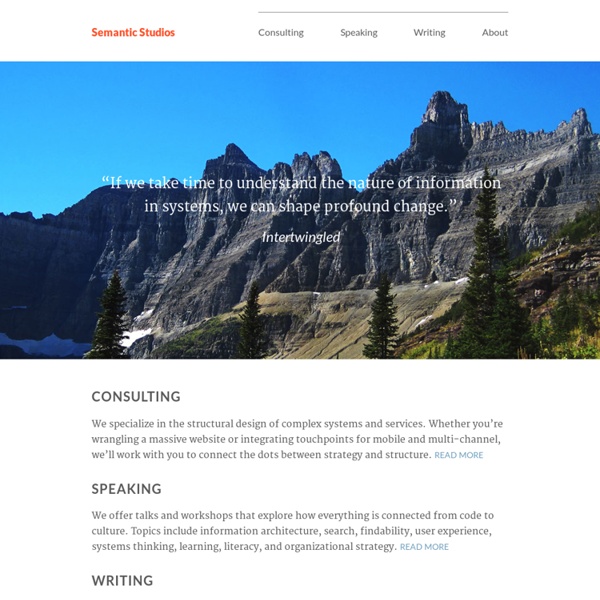



curriculum/resources/design-process-ARTICLE at master · dev-academy-programme/curriculum iaslash webdesign.tutsplus Wireframing is an important step in any screen design process. It primarily allows you to define the information hierarchy of your design, making it easier for you to plan the layout according to how you want your user to process the information. If you've yet to use wireframing, it's time to get your feet wet. Before we get started though, a quick question: are you needing a pro website solution? It's like an architectural blueprint; you need to see it in two-dimensional black and white diagrams before you understand how to build the actual house. At a deeper level, a wireframe is also very useful in determining how the user interacts with the interface. Wireframing is important because it allows the designer to plan the layout and interaction of an interface without being distracted by colors, typeface choices or even copy. Like the foundation of a building, it has to be fundamentally strong before you decide whether to give it an expensive coat of paint. What makes it a winner?
GURTEEN KNOWLEDGE 64 People You Should Know in Design – Tradecraft – Medium Irene Au — Design Partner @ Khosla Ventures Age: 44Hometown: Columbia, SCSchool: University of South Carolina, University of Illinois Concentration: Electrical and Computer Engineering, Human Computer Interaction (MS)Companies: Khosla Ventures, Udacity, Google, Yahoo, NetscapeSpecialties: UX Design, Interaction Design, UI Design, User Research, Organizational Design, Hiring Why?: As former head of the design teams for Google and Yahoo!, Irene has been a huge force in shaping UX talent in the Valley over the years. Irene has also led the Product Design team at edtech startup, Udacity.
Louis Rosenfeld: Information Architecture & User Experience Medium’s Best Design Writing of 2016 – The Startup – Medium Creative, insightful, helpful, and actionable; we’ve curated and categorized 75 of Medium’s best design posts from the past year. Enjoy! See Medium’s Best Design Writing of 2015. Approaches to the Creative Process The pathway to creative success is neither static nor singular, as the following articles reveal. How to Apply a Design Thinking, HCD, UX, or Any Creative Process from Scratch by Dan Nessler. 8 Unintuitive Lessons on Being a Designer by Julie Zhuo. 4 Things Working at Facebook Has Taught Me About Design Critique by Tanner Christensen. How We Tried to Design Our Own Book Cover (and How Jessica Hische Saved the Day) by Jake Knapp. The Broken Window Theory In Design and Product Development explains why little problems are important problems; by Tobias van Schneider. The Design Process characterizes the current state of UX — one of awkward pubescence — and suggests that some serious self-reflection, together, is necessary if design is to be taken seriously; by Pablo Stanley. Think Less.
Heuristic Evaluation with Morae Jakob Nielsen introduced the notion of "discount usability" in the early 1990s. Discount usability served as an antidote to the received wisdom (amongst developers at least) that usability takes forever and costs too much money. Discount usability introduced three key techniques that aimed to simplify methods of data collection: The cost of Nielsen's first discount usability method, usability testing, has been greatly reduced by Techsmith's Morae software, first released in 2004. I've spent a lot of time using Morae for usability testing. A few words about heuristic evaluation Heuristic evaluation is a key component of the discount usability movement introduced by Jacob Nielsen. "Heuristic evaluation is a usability engineering method for finding the usability problems in a user interface design so that they can be attended to as part of an iterative design process. Streamlining the process Each evaluator fires up Morae Recorder and carries out their evaluation. Step 1: The evaluation Dr.
The most promising design tools you should try in 2017 2016 was clearly the year for design tools, with new tools being released to the public and previously existing tools being improved with new features. I’ve picked some design tools worth keeping an eye out for throughout 2017. These tools are based on popularity among design tool user communities, and I am sure that I’m not mentioning some tools. 01. Figma With Sketch becoming more popular, vector-based drawing software is becoming more mainstream. Official site: More info: Community: 02. One lesser-known fact is that Adobe has been heavily involved in prototyping for a long time. Official site: More info: Community: 03. Zeplin is the best-known plugin for Sketch. Offcial site: More info:
UXLabs | User Experience Research and Design What are the top 10 web development trends in 2017? - Quora Best Practices for Long Scrolling – UX Planet The days of “above the fold” are over. Long scrolling and infinitely scrolling sites are becoming more and more common lately, and it’s no mere trend or coincidence. The technique that allows user to scroll the chunks of content without any interruption or additional interaction (information simply appear as the user scrolls down the page) has following benefits: It simplifies navigation.Has more storytelling potential to engage users.Translates well to mobile devices. The increased use of mobile screens has definitely played a key role in the widespread acceptance of this technique: The smaller the screen, the longer the scroll Furthermore, the gesture controls of mobile devices make scrolling intuitive and fun. Use Visual Cues Inform users that most of the content is below the fold Suggest scrolling with design elements so that every user can quickly see how the site works. Keep Navigation Options Persistently Visible Use sticky navigation or jump-to-page option Design Screen as Page P.S.